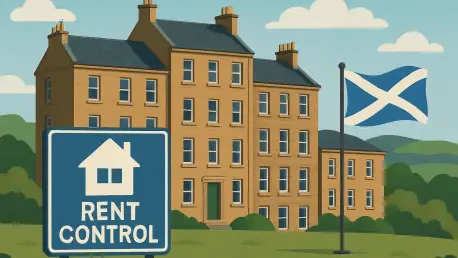In Scotland, the struggle to secure affordable housing while fostering a robust rental market has taken center stage with the ongoing debate over the Housing (Scotland) Bill in the Scottish Parliament. This legislation, now in its final Stage Three proceedings at Holyrood, proposes significant measures to cap rent increases, aiming to protect tenants from soaring costs. The bill allows local councils to limit annual rent hikes to inflation plus one percentage point, with a ceiling of 6%, in designated areas. This move comes after temporary controls, implemented during the pandemic, lapsed earlier this year. As policymakers grapple with these changes, a critical question emerges: can tenant protections coexist with the incentives needed to encourage housing investment? The tension between affordability for renters and the economic viability of the private rental sector sets the stage for a complex and heated discussion that could shape Scotland’s housing landscape for years to come.
Striking a Policy Equilibrium
The core of the Housing (Scotland) Bill lies in its attempt to shield tenants from excessive rent increases while navigating the concerns of landlords and housing providers. Recent amendments, however, have stirred controversy by exempting mid-market rent and build-to-rent properties from these caps. The rationale behind this decision is to prevent discouraging investment in new housing developments, which are crucial for addressing Scotland’s rental property shortage. Yet, tenant advocacy groups, such as Living Rent, argue that these exemptions undermine the bill’s purpose, prioritizing landlord interests over renter needs. This discord highlights a broader challenge in housing policy: ensuring that measures to control costs do not inadvertently stifle the supply of rental homes. The Scottish Government’s position reflects an effort to tread a middle ground, but the debate remains fierce, with stakeholders on both sides questioning whether the legislation can achieve true fairness without compromising one group’s interests.
Navigating Stakeholder Perspectives
As the bill nears its final vote, diverse viewpoints underscore the complexity of crafting effective housing policy. Industry voices, like Timothy Douglas from Propertymark, advocate for a balanced approach that supports landlords, tenants, and agents alike. While acknowledging the potential benefits of rent caps tied to inflation, concerns persist about their application between tenancies and the impact on landlords who invest in property improvements or maintain below-market rents. Consistent data collection and clear guidelines for rent control areas are seen as essential to ensure fairness. Meanwhile, tenant groups push for stronger protections, viewing exemptions as a setback to affordability goals. The Scottish Government’s amendments, shaped by political input and public consultation over the past months, aim to safeguard investment, but they also reveal the difficulty of reconciling immediate tenant relief with long-term sector stability. The outcome of past debates and the final legislation will likely influence how future housing challenges are addressed in Scotland.









